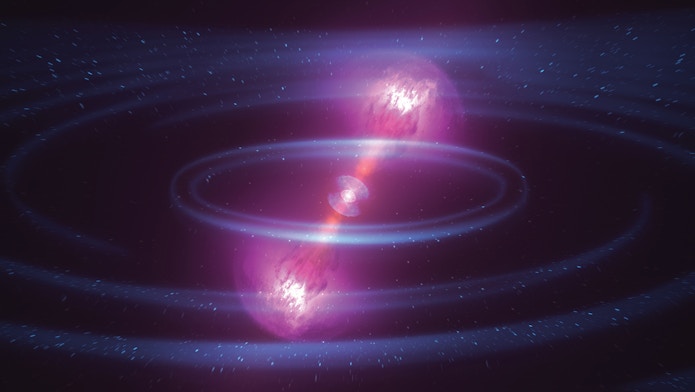Gravitational Waves from Neutron Star Merger Offer New Regime of Understanding

About 130 million light-years from Earth, the relics of two exploded stars neared the end of a spiraling, dyadic dance around each other. The dance partners were incredibly dense neutron stars: Just a teaspoonful of their neutron-rich star stuff has a mass of about 1 billion metric tons.
Over time, the stars drifted toward each other and picked up speed. Just before collision, each orbit took fractions of a second. Then came the big finale: a final merger that sent ripples through the fabric of space-time and the astrophysics community. On August 17, 2017, scientists at the Advanced Laser Interferometer Gravitational-Wave Observatory (LIGO) in the United States detected the gravitational waves that emanated from that cosmic collision.
The event turned out to be the “cosmic gift that keeps on giving,” says astrophysicist Samaya Nissanke, of Radboud University Nijmegen in the Netherlands. Observations of the merger ushered in a long list of firsts: The event was the first direct sighting of two neutron stars slamming together, the first confirmation that such collisions produce vast amounts of heavy elements, such as gold, and the first time scientists identified both gravitational waves and light coming from the same cosmic event. The only previously detected gravitational waves had originated from merging black holes, which scientists don’t expect to produce light.


